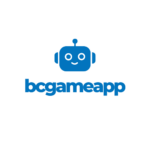In the swiftly evolving world of technology, technical writing has become an indispensable tool for communicating complex information clearly and effectively. As industries continue to grow and new technologies emerge, the demand for skilled technical writers is at an all-time high. Staying ahead of the curve requires a keen understanding of the latest trends that are shaping the field.
Technical Writing trends
AI and Machine Learning Integration
 Technological advancements have significantly influenced technical writing, particularly through the integration of AI and machine learning. These tools assist in automating mundane tasks, such as error checking and data analysis, thereby enhancing efficiency. They also enable personalized content creation at scale, ensuring that documents meet the diverse needs of global audiences.
Technological advancements have significantly influenced technical writing, particularly through the integration of AI and machine learning. These tools assist in automating mundane tasks, such as error checking and data analysis, thereby enhancing efficiency. They also enable personalized content creation at scale, ensuring that documents meet the diverse needs of global audiences.
Another key trend in technical writing is the emphasis on UX writing. UX writing focuses on creating user-facing text that helps users interact with products effectively. It’s crucial for improving user satisfaction and product usability. Technical writers are now prioritizing clear, concise, and useful content that guides and assists users rather than just providing technical information.
Current Technical Writing Trends
Technical writing continues to evolve, adapting cutting-edge tools and methodologies to meet the needs of a dynamic technology landscape. Below, the section delves deeper into current trends that are shaping the field today.
Adoption of AI and Machine Learning
 Technical writers integrate AI and machine learning technologies to streamline their workflows and enhance content quality. These tools automate meticulous tasks such as grammar checking, consistency enforcement, and data analysis, considerably reducing the time spent on manual revisions. For instance, AI-driven platforms can suggest improvements in real-time, making it easier to maintain accuracy across extensive documentation. Further, machine learning algorithms aid in generating personalized content, tailoring information to meet varied audience preferences across different regions.
Technical writers integrate AI and machine learning technologies to streamline their workflows and enhance content quality. These tools automate meticulous tasks such as grammar checking, consistency enforcement, and data analysis, considerably reducing the time spent on manual revisions. For instance, AI-driven platforms can suggest improvements in real-time, making it easier to maintain accuracy across extensive documentation. Further, machine learning algorithms aid in generating personalized content, tailoring information to meet varied audience preferences across different regions.
The Shift Towards Minimalism
In response to increasingly complex technologies, there is a marked shift towards minimalism in technical documentation. Writers are now focusing on clarity and conciseness, using plain language to make information comprehensible to non-experts. This trend is not just about reducing the word count but about strategically structuring information to prioritize user needs. Concepts are broken down into digestible parts, often accompanied by visual aids like infographics and diagrams to enhance understanding. This minimalist approach not only improves readability but also enhances the user experience by ensuring that essential information is easily accessible.
Impact of Major Industries
The influence of major industries on technical writing is profound, with sectors like software and IT and healthcare driving significant changes in documentation practices.
Software and IT
 In the software and IT industry, the integration of AI tools plays a crucial role in technical writing. These tools help streamline the creation of technical documents by automating routine checks and data compilation. For example, they facilitate the rapid editing of code documentation and user manuals, ensuring that these resources are both accurate and up to date with the latest software updates. Collaborative platforms such as GitHub and Jira enhance this process by allowing writers to work seamlessly with developers, creating real-time updates that are integral to software development cycles. This heightened efficiency ensures that IT firms can maintain a competitive edge by providing timely, clear, and useful help resources to both their staff and end-users.
In the software and IT industry, the integration of AI tools plays a crucial role in technical writing. These tools help streamline the creation of technical documents by automating routine checks and data compilation. For example, they facilitate the rapid editing of code documentation and user manuals, ensuring that these resources are both accurate and up to date with the latest software updates. Collaborative platforms such as GitHub and Jira enhance this process by allowing writers to work seamlessly with developers, creating real-time updates that are integral to software development cycles. This heightened efficiency ensures that IT firms can maintain a competitive edge by providing timely, clear, and useful help resources to both their staff and end-users.
Healthcare Documentation
In healthcare, technical writing is critical for ensuring compliance with stringent regulatory standards and providing clear, accessible patient information. Documentation in this industry encompasses a range of materials, from patient care documents to user manuals for medical devices. The complexity of healthcare information demands high precision and clarity to avoid potential risks or miscommunication. Technical writers in this field often utilize structured writing tools to create documentation that adheres to regulatory guidelines while remaining digestible for non-specialists. Moreover, the shift toward electronic health records (EHRs) has necessitated the adoption of specialized software that supports the secure and clear presentation of patient information, promoting better patient outcomes and streamlined care practices.

